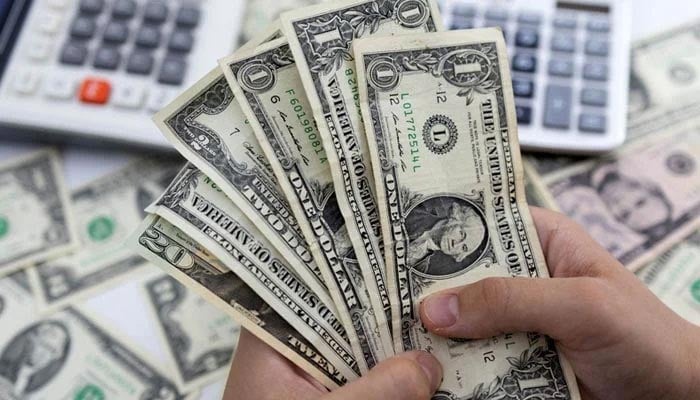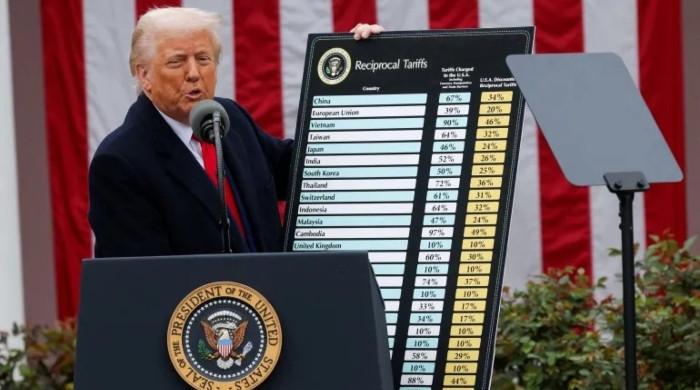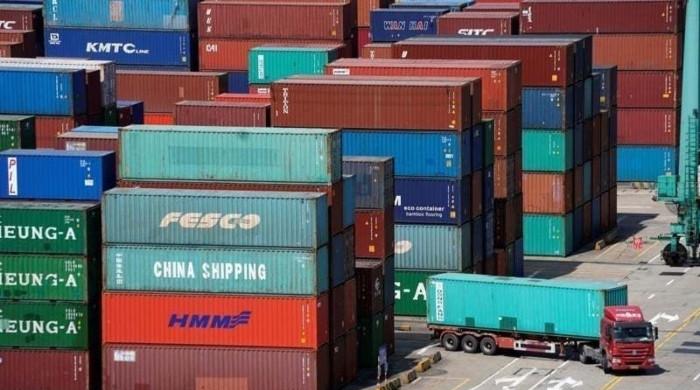On the edge of default
Despite the debt sustainability challenges and the imperfect debt management, Pakistan has never (officially) defaulted
September 10, 2024

As Pakistan looks for a spot on the International Monetary Fund (IMF) Board’s agenda, the prudent course during this downtime is to reflect on its debt sustainability and develop a broader understanding of the factors that have kept Pakistan amongst the "commitment type" of sovereign borrowers instead of "opportunistic type". The former type of sovereign builds a reputation that it is unlikely to default.
Notwithstanding the importance of the complex scenarios incorporated in the debt sustainability analyses conducted by national and international stakeholders, let’s focus on the fundamental "i–g" measure of debt sustainability. This denotes the difference between the average interest rate on government debt and the GDP growth rate.
When the differential is negative, it implies that the economy is growing faster than the interest rate on debt, making it easier for governments to manage their debt levels even with primary deficits. In the last ten years, Pakistan has had negative difference only once. In five out of the last ten years, the difference was 10 percentage points or higher. This also explains the persistent upward trend in markup payments to GDP ratio.
One of the reasons for a positive i-g difference is accumulation of public debt. When a country has a higher stock of public debt, as is the case with Pakistan, then the risk premium on its government bonds rises, resulting in higher interest rates on otherwise safe and liquid assets (for instance, government treasury bills).
High-yield government securities increase the misallocation of credit, leading to lower aggregate productivity and output. The evidence of misallocation lies in the banking system’s balance sheet. Investments are more than double the advances and the investments in government securities are higher than 90%.
A higher dependency ratio (the ratio of dependents to the working-age population) is linked to a lower i–g differential. This is because an aging population is assumed to save more, reducing interest rates.
Despite having a dependency ratio 12 percentage points higher than the average for lower middle- income countries, such dynamics don’t hold true for Pakistan because of lower tendency to save. The savings-to GDP ratio for Pakistan is 13% whereas the average for lower middle-income countries is 19.2%.
Debt sustainability heavily depends on the composition of debt — external vs domestic debt, and long-term vs short-term debt. Almost all the defaulting countries of this century had a higher external debt-to-GDP ratio. The recent default by Sri Lanka was also triggered by large external debt. As the country was unable to get timely financial assistance from international creditors, it had to default due to depletion of forex reserves.
Pakistan’s default risk in the last five years has also been stimulated by record high external debt-to-GDP ratio (37.6%) stemming from the depreciation of the rupee, slow economic growth and reliance on external assistance to finance mega infrastructure projects and current account deficits.
Nevertheless, one thing should be clear: unsustainable debt is bad whether it’s domestic or external. Domestic debt is usually considered less risky. But in a high interest rate period, domestic debt is as risky as external debt.
The role of debt tenor in debt sustainability is not straightforward. Short-term debt typically carries lower interest rates because lenders face less risk over a shorter period. However, the need to frequently refinance short-term debt exposes the borrower to the risk of rising interest rates, which can increase debt servicing costs and pressure debt sustainability.
While debt with longer tenors may have higher interest rates due to the increased risk over time, it offers more stability as the borrower locks in the interest rate for a longer period. This reduces the need for frequent refinancing and mitigates the risk of interest rate fluctuations, enhancing debt sustainability.
Successive governments of Pakistan have generally preferred long-term borrowing to short-term borrowing. The long-term debt share in total debt mostly remains above 65%. Even in the last three fiscal years, when markets considered Pakistan at high default risk, the long-term debt was more than 80% of the total debt. This is no less than an achievement because the government’s ability to sell securities with longer maturities is a sign of investor confidence in the economy and government’s ability to repay.
Moreover, according to textbook logic, Pakistan was not at risk of default because during times of high default risk, sovereigns can easily raise short-term debt. This helps maintain fiscal discipline and reduces the likelihood of default by keeping the sovereign wary of consequences of its borrowing decisions immediately.
However, for practical reasons, short-term debt should have been preferred in recent years of higher interest rates. It would have allowed Pakistan to benefit from future decreases in interest rates. High-interest rates are often associated with economic uncertainty. Committing to long-term debt at high rates could increase the overall cost of borrowing for a long time, even after rates fall. Short-term debt typically has a lower coupon rate than long-term debt, which could reduce the immediate debt servicing burden.
Despite the debt sustainability challenges and the imperfect debt management, Pakistan has never (officially) defaulted. This can be attributed to the government’s demonstration of a strong commitment to maintaining fiscal discipline through various austerity measures, tax reforms, and public expenditure controls, albeit with varying degrees of success. Credit goes to Pakistan’s bilateral relationships as well for complementing its engagement with international financial institutions like the IMF, World Bank, and ADB.
The strongest domestic factor, however, is political will. In theory, sovereigns could default without facing direct legal consequences, yet most countries avoid default. The leading theoretical frameworks explaining the behaviour of sovereign borrowers particularly focus on the role of reputation in influencing borrowing costs and the likelihood of default.
Maintaining a good reputation is critical for sovereigns to continue accessing international credit markets. Defaulting can lead to exclusion from these markets or higher future borrowing costs. The decision to repay debt is not just an economic one but also deeply political. The interaction between economic costs, political pressures, and the global financial environment influences sovereign debt behavior.
In Pakistan’s political economic context, default seems to be the only forbidden sin. The ruling class has always feared the public backlash more than the economic costs of default. There are multiple examples from the past when countries like Argentina, Venezuela, Greece, Zimbabwe, Russia, Ecuador, and Peru defaulted mainly due to political mismanagement.
On the external front, the structural power of international financial markets has a crucial role in determining our debt repayment decisions. Unlike direct influence through lobbying or coercion, structural power operates by setting the parameters within which states operate. Financial markets, by their ability to provide or withhold credit, can effectively control the economic policy options available to governments. This power is particularly evident in the globalised and financialised world economy.
Traditionally, the structural power of creditors was enforced through the fear of spillover costs associated with noncompliance, such as capital flight, higher borrowing costs, and a potential credit embargo. These consequences could severely damage the domestic economy, especially for capital-dependent sectors, which incentivises compliance.
In recent times, enforcement has become stronger due to the proliferation of creditor lawsuits. Historically, sovereigns were largely immune from legal action by foreign creditors. But that immunity has eroded now.
Argentina fought a legal battle with its creditors for 14 years. Creditors successfully blocked the Republic of Congo’s oil exports for years, disrupting a multi-billion industry, with lawsuits amounting to 364 million euros against a nominal GDP of 876 million euros in 2009. The Venezuelan government decided to service bond payments due to litigation risks, despite severe economic conditions.
Whether we believe that Pakistan has been able to avoid default due to its own efforts, external assistance or a combination of both, there is no reason to let our guard down. Debt servicing costs are projected to scale up in the next three to four years. Provinces must rise to the challenge of revenue generation and human capital development, complementing the federation’s efforts to rationalise expenses and retire the nation’s obligations gracefully.
The writer is an associate research fellow at the Sustainable Development Policy Institute, Islamabad.
Disclaimer: The viewpoints expressed in this piece are the writer's own and don't necessarily reflect Geo.tv's editorial policy.
Originally published in The News











